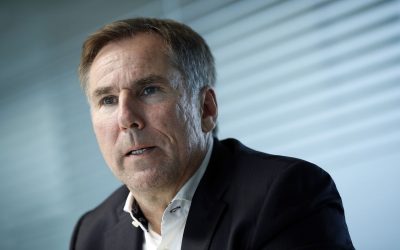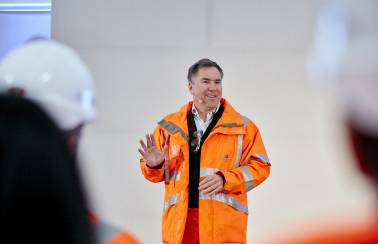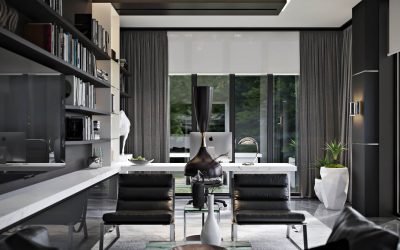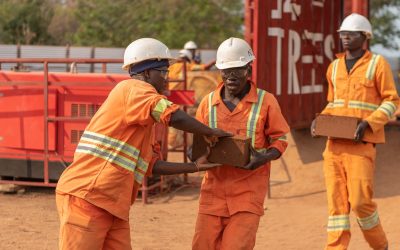-
Net Sales up 4.0%1, Recurring EBITDA2 up 9.0% in 9M
-
Net Sales up 4.9%1, Recurring EBITDA2 up 6.4% in Q3
-
2019 targets confirmed
-
Appointment of Chief Sustainability Officer
9M 2019 Performance
| Group (in million CHF) |
9M 2019 |
9M 2018 |
±% |
±% like-for-like |
| Net Sales |
20,200 |
20,634 |
-2.1 |
4.0 |
| Recurring EBITDA (pre-IFRS16) |
4,543 |
4,351 |
4.4 |
9.0 |
Q3 2019 Performance
| Group (in million CHF) |
Q3 2019 |
Q3 2018 |
±% |
±% like-for-like |
| Net Sales |
7,142 |
7,362 |
-3.0 |
4.9 |
| Recurring EBITDA (pre-IFRS16) |
1,881 |
1,867 |
0.8 |
6.4 |
Jan Jenisch, CEO: “Q3 is the fifth consecutive quarter of over-proportional growth in profitability and we are on track to achieve all targets for 2019. I would like to congratulate all employees for executing Strategy 2022 with high speed and impressive results.
Our financial discipline is generating value and we are making significant progress in cash conversion and in deleveraging our balance sheet. We expect the positive dynamics to continue into the fourth quarter and we are confident that we will deliver a strong full-year performance and achieve a new level of balance sheet strength.
We have further strengthened our sustainability efforts with the appointment of the first Chief Sustainability Officer to the Executive Committee. We are accelerating our vision of running our operations with zero harm to people and contributing to a built environment that will be carbon-neutral, fully recyclable and have a positive environmental impact.”
Net sales growth in all regions in Q3
Growth was achieved in all regions and in all four business segments, supported by solid global market demand, especially in mature markets. With 7 bolt-on acquisitions in 2019, the latest one in October in the UK, the company continues growing as outlined in Strategy 2022 – “Building for Growth”.
5th quarter of overproportional growth of Recurring EBITDA2
During the quarter the Recurring EBITDA2 increased in all business segments and in four out of five regions. North America and Europe increased Recurring EBITDA2 by 6.9% and 7.1% respectively, driven by volumes and positive price momentum.
REGIONAL PERFORMANCE
The Europe region had another very strong quarter, with good market demand across the region. Further margin improvement was driven by positive price momentum and operational efficiency. The UK market was resilient despite signs of weaker market demand due to current political uncertainty.
North America achieved strong results, with good volume growth in all business segments. Positive price momentum and easing cost inflation further supported profitable growth in the US, while there was a softer market environment in Canada.
The Latin America region stabilized in Q3, with good performance in Colombia and cement volume growth in Brazil. Markets in Mexico and Ecuador were softer while effective cost and price management partially mitigated these challenges.
The Asia Pacific region showed strong margin improvement in Q3. The good progress in India was driven by price and easing cost inflation despite softer demand. Effective turnaround initiatives supported resilient performance in Australia. China continued to deliver another positive contribution in Q3.
Ongoing turnaround efforts in the Middle East Africa region partially offset a challenging environment in key markets. While difficult market conditions persist in Algeria and Egypt, there were performance improvements in South Africa, Iraq and Jordan.
STRENGTHENING SUSTAINABILITY
In Q3 LafargeHolcim announced an allocation of CHF 160 million to reduce its annual carbon footprint in Europe. The objective is to reduce annual CO2 emissions in Europe by a further 15 percent like-for-like, representing 3 million tons of CO2, by 2022.
The company made another major step with the appointment of its first Chief Sustainability Officer position to the Executive Committee, accelerating efforts to be the industry leader on decarbonization, circular economy, health and safety and corporate social responsibility.
OUTLOOK
The positive momentum of the first nine months is expected to continue into Q4 with:
- Continued market growth in North America
- Softer but stabilizing cement demand in Latin America
- Continued demand growth across most countries in Europe
- Challenging market conditions in Middle East Africa
- Continued demand growth in Asia Pacific
Based on the above trends and the successful execution of Strategy 2022, the previously communicated targets for 2019 are confirmed:
- Net Sales growth of 3 to 5 percent on a like-for-like basis
- Recurring EBITDA pre-IFRS 16 growth of at least 5 percent on a like-for-like basis
- Ratio of Net Debt to Recurring EBITDA well below 2 times1 by the end of 2019
- Significantly higher cash conversion
- Capex and bolt-on acquisitions of less than CHF 2 billion
Key figures
| Group Q3 |
2019 |
2018 |
±% |
±% LfL |
| Net Sales (CHFm) |
7,142 |
7,362 |
-3.0 |
4.9 |
| Recurring EBITDA (pre-IFRS16) (CHFm) |
1,881 |
1,867 |
0.8 |
6.4 |
| Recurring EBITDA (post-IFRS16) (CHFm) |
1,985 |
|
|
|
| Group 9M |
2019 |
2018 |
±% |
±% LfL |
| Net Sales (CHFm) |
20,200 |
20,634 |
-2.1 |
4.0 |
| Recurring EBITDA (pre-IFRS16) (CHFm) |
4,543 |
4,351 |
4.4 |
9.0 |
| Recurring EBITDA (post-IFRS16) (CHFm) |
4,863 |
|
|
|
| Group results by segment |
9M 2019 |
9M 2018 |
±% |
±% LfL |
| Sales of cement (mt) |
156.4 |
165.4 |
-5.5 |
0.7 |
| Net Sales Cement (CEM) (CHFm) |
13,294 |
13,573 |
-2.1 |
5.5 |
| CEM Recurring EBITDA (pre-IFRS16) (CHFm) |
3,551 |
3,449 |
3.0 |
7.9 |
| CEM Recurring EBITDA margin (pre-IFRS16) (%) |
26.7 |
25.4 |
|
|
|
| Sales of aggregates (mt) |
202.4 |
205.3 |
-1.4 |
-0.4 |
| Net Sales Aggregates (AGG) (CHFm) |
3,105 |
3,091 |
0.4 |
3.1 |
| AGG Recurring EBITDA (pre-IFRS16) (CHFm) |
653 |
631 |
3.5 |
5.4 |
| AGG Recurring EBITDA margin (pre-IFRS16) (%) |
21.0 |
20.4 |
|
|
|
| Sales of ready-mix concrete (m m3) |
36.1 |
38.0 |
-5.0 |
-1.5 |
| Net Sales Ready-Mix Concrete (RMX) (CHFm) |
4,002 |
4,111 |
-2.7 |
0.4 |
| RMX Recurring EBITDA (pre-IFRS16) (CHFm) |
181 |
135 |
33.6 |
30.8 |
| RMX Recurring EBITDA margin (pre-IFRS16) (%) |
4.5 |
3.3 |
|
|
|
|
|
|
|
| Net Sales Solutions & Products (SOP) (CHFm) |
1,702 |
1,787 |
-4.7 |
2.0 |
| SOP Recurring EBITDA (pre-IFRS16) (CHFm) |
159 |
137 |
15.9 |
31.6 |
| SOP Recurring EBITDA margin (pre-IFRS16) (%) |
9.3 |
7.7 |
|
|
Regional performance 9M
| Asia Pacific |
2019 |
2018 |
±% |
±% LfL |
| Sales of cement (mt) |
54.7 |
66.6 |
-17.9 |
-1.9 |
| Sales of aggregates (mt) |
20.4 |
23.6 |
-13.6 |
-2.9 |
| Sales of ready-mix concrete (m m3 ) |
7.4 |
9.3 |
-21.0 |
-1.3 |
| Net Sales to external customers (CHFm) |
4,879 |
5,576 |
-12.5 |
1.6 |
| Recurring EBITDA (pre-IFRS16) (CHFm) |
1,254 |
1,151 |
9.0 |
17.5 |
| Europe |
2019 |
2018 |
±% |
±% LfL |
| Sales of cement (mt) |
35.4 |
33.9 |
4.3 |
4.3 |
| Sales of aggregates (mt) |
89.1 |
91.0 |
-2.0 |
-2.1 |
| Sales of ready-mix concrete (m m3 ) |
14.6 |
14.3 |
1.7 |
1.6 |
| Net Sales to external customers (CHFm) |
5,836 |
5,692 |
2.5 |
6.4 |
| Recurring EBITDA (pre-IFRS16) (CHFm) |
1,170 |
1,079 |
8.4 |
12.6 |
| Latin America |
2019 |
2018 |
±% |
±% LfL |
| Sales of cement (mt) |
18.7 |
18.9 |
-1.4 |
-1.4 |
| Sales of aggregates (mt) |
3.1 |
2.7 |
15.7 |
15.7 |
| Sales of ready-mix concrete (m m3 ) |
3.8 |
4.2 |
-9.8 |
-9.8 |
| Net Sales to external customers (CHFm) |
1,973 |
2,126 |
-7.2 |
4.4 |
| Recurring EBITDA (pre-IFRS16) (CHFm) |
669 |
739 |
-9.4 |
-1.7 |
| Middle East Africa |
2019 |
2018 |
±% |
±% LfL |
| Sales of cement (mt) |
26.8 |
26.9 |
-0.6 |
-0.6 |
| Sales of aggregates (mt) |
5.0 |
6.7 |
-25.2 |
-25.2 |
| Sales of ready-mix concrete (m m3 ) |
2.8 |
3.1 |
-8.5 |
-8.5 |
| Net Sales to external customers (CHFm) |
2,189 |
2,306 |
-5.1 |
0.9 |
| Recurring EBITDA (pre-IFRS16) (CHFm) |
490 |
566 |
-13.3 |
-6.6 |
| North America |
2019 |
2018 |
±% |
±% LfL |
| Sales of cement (mt) |
15.8 |
14.9 |
6.1 |
6.1 |
| Sales of aggregates (mt) |
84.8 |
81.3 |
4.2 |
3.7 |
| Sales of ready-mix concrete (m m3 ) |
7.6 |
7.2 |
6.7 |
0.1 |
| Net Sales to external customers (CHFm) |
4,755 |
4,366 |
8.9 |
5.7 |
| Recurring EBITDA (pre-IFRS16) (CHFm) |
1,192 |
1,113 |
7.1 |
4.4 |
RECONCILIATION TO GROUP ACCOUNTS
Reconciling measures of profit and loss to the consolidated statement of income of LafargeHolcim
| Million CHF |
9M 2019 |
9M 2018 |
| Recurring EBITDA* |
4,863 |
4,351 |
| Depreciation and amortization and impairment of operating assets** |
(1,824) |
(1,668) |
| Restructuring, litigation, implementation and other non-recurring costs |
(101) |
(354) |
| Operating profit |
2,938 |
2,329 |
* Including CHF 320 million of IFRS 16 lease impact in 2019
** Including CHF (286) million of IFRS 16 lease impact in 2019
ADDITIONAL INFORMATION
Non-GAAP definitions
Some non-GAAP measures are used in this release to help describe the performance of LafargeHolcim. A full set of these non-GAAP definitions can be found via the link in the Documents box on the right of your screen.
Analyst presentation
The analyst presentation of the third quarter trading update is available in the Documents box on the right of your screen.
| Media conference: 09:00 CEST
Switzerland: +41 58 310 5000
France: +33 1 7091 8706
UK: +44 207 107 0613
US: +1 631 570 5613
Analyst conference: 10:00 CEST |
|
About LafargeHolcim
LafargeHolcim is the global leader in building materials and solutions. We are active in four business segments: Cement, Aggregates, Ready-Mix Concrete and Solutions & Products.
With leading positions in all regions of the world and a balanced portfolio between developing and mature markets, LafargeHolcim offers a broad range of high-quality building materials and solutions. LafargeHolcim experts solve the challenges that customers face around the world, whether they are building individual homes or major infrastructure projects. Demand for LafargeHolcim materials and solutions is driven by global population growth, urbanization, improved living standards and sustainable construction. Around 75,000 people work for the company in around 80 countries.
Important disclaimer – forward-looking statements:
This document contains forward-looking statements. Such forward-looking statements do not constitute forecasts regarding results or any other performance indicator, but rather trends or targets, as the case may be, including with respect to plans, initiatives, events, products, solutions and services, their development and potential. Although LafargeHolcim believes that the expectations reflected in such forward-looking statements are based on reasonable assumptions as at the time of publishing this document, investors are cautioned that these statements are not guarantees of future performance. Actual results may differ materially from the forward-looking statements as a result of a number of risks and uncertainties, many of which are difficult to predict and generally beyond the control of LafargeHolcim, including but not limited to the risks described in the LafargeHolcim’s annual report available on its website and uncertainties related to the market conditions and the implementation of our plans. Accordingly, we caution you against relying on forward-looking statements. LafargeHolcim does not undertake to provide updates of these forward-looking statements.
1 like-for-like
2 like-for-like,pre-IFRS 16
3 pre-IFRS 16 and at constant foreign exchange










